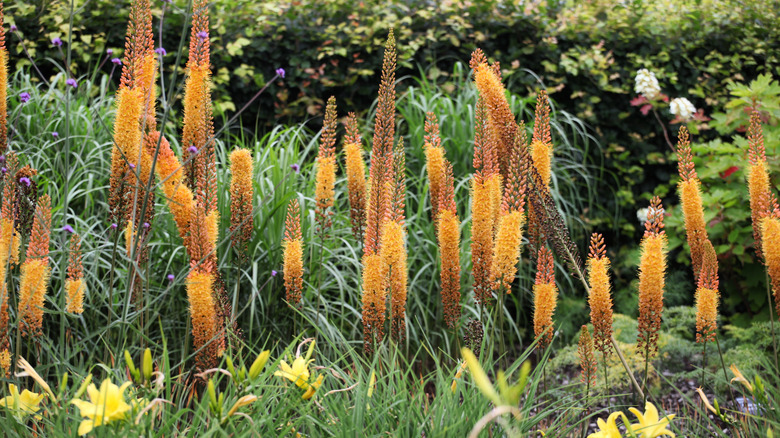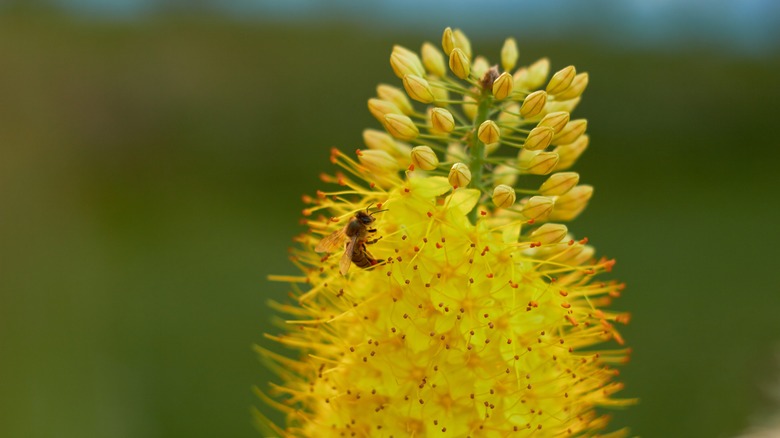The Beautiful Spiky Flowering Plant That Will Take Your Garden To New Heights
If your flower garden is coming up short this year, there's a must-have addition to include in your fall bulb planting: foxtail lilies (Eremurus). Their spiky shape, towering height, and unique flower pattern make foxtail lilies ideal for adding visual interest to border gardens and beds. Their centers are a vibrant yellow and the flowers come in a variety of different colors ranging from white to light pink, orange, and yellow.
Depending on the variety of foxtail lily you choose to plant, you can expect to see flower spikes up to 9 feet tall. For the best visual effect, plant them against a backdrop of flourishing trees, among other tall flowers, or as a complementary layer to shorter flowers. The tall flowering plant also makes a stunning backdrop for garden bulbs. Because they are tall and thin, they benefit from being placed with some protection from harsh winds. Foxtail lilies are hardy perennials in USDA agricultural zones 5 through 8, and they require well-drained, rich soil to thrive.
How to plant and nurture foxtail lilies
Because foxtail lilies are picky about the moisture level of their soil, it's important to choose the perfect spot to plant their bulbs. They prefer consistent moisture, but if their soil doesn't drain well enough, root rot can be a real threat. Choose a location with full sun because these flowers prefer six or more hours of sunlight per day. If you can't find a spot in your garden that is blocked from wind, stake the flowers to support them.
Once you've found the perfect location, plant bulbs 6 inches deep and 12 inches apart, with the pointy end facing down. If you live in a mild climate, plant in early fall. For cool climates, you'll have more success with spring planting. Once you see the leaves begin to sprout, add mulch to the soil to protect it from cold. Many growers report that the first couple of years after planting may not present the most impressive flowers, but stick with it! Keep the soil evenly moist and amend it with compost or fertilizer as needed.
Benefits and things to know about foxtail lilies
On top of their magnificent height and whimsical shape, foxtail lilies also offer several benefits to your garden beyond aesthetics. Most importantly, they can attract hummingbirds, butterflies, and other pollinators (here's another colorful perennial that can attract hummingbirds to your garden). They are also fragrant and make a beautiful addition to a cut bouquet.
Aside from their sensitivity to frost and specific moisture needs, foxtail lilies do have several traits that make them relatively easy to grow. They're resistant to deer, diseases, and rabbits, and most insects won't bother with your foxtail lily blooms. If you live in an area with slugs, they may present a problem from time to time, but pests are unlikely to ruin these flowers.
While true lilies are extremely toxic and even fatal to cats, pet owners will be relieved to know that foxtail lilies are not known to be poisonous to dogs, cats, or humans. They are still not considered edible and should not be consumed intentionally. Even though the names are similar, foxtail lilies also have no relation to invasive green foxtail weeds, so there's no need to be concerned about large-scale unwanted spread. The plants can reproduce through their seeds over several years, and their tubers will also multiply. Divide them every few years in the fall.


